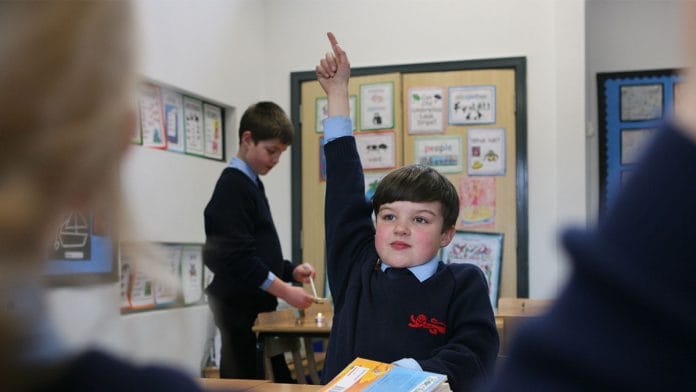New Delhi: Covid-19 cases and outbreaks were ‘low’ among students and staff members in schools and nurseries in the UK, which re-opened in summer after the country’s first lockdown in March, a new study has found.
According to research published in The Lancet journal, the re-opening of schools in June was “associated with a low risk of Covid-19 cases” wherein 113 single cases, 55 outbreaks (two or more linked cases recorded within 14 days in the same school) and 9 co-primary cases (two or more confirmed cases within 48 hours) were recorded.
The study also found that the confirmed infections were more likely to involve staff members than students.
However, the researchers noted that this could also be due to fewer students in attendance than normal, and therefore infection rates could be “underestimated”.
The study also strongly correlated the outbreaks in schools with local infection rates and pointed out the need to reduce community transmission to protect educational institutions.
Published Tuesday, the study was conducted by researchers from the Immunisation and Countermeasures Division at Public Health England, the London School of Hygiene & Tropical Medicine and St George’s University of London.
Also read: Pfizer Covid shot is highly effective, has no safety concerns, US FDA staff report says
Infection rates higher in staff
According to the research, of the 113 single cases recorded after reopening of schools, 49 per cent were children and 51 per cent were staff members.
Infection rates were also found to be higher in staff than students. Staff members accounted for 73 per cent of cases linked to outbreaks compared to students who contributed to 27 per cent.
Dr Sharif Ismail, from the London School of Hygiene & Tropical Medicine, said, “While staff did have higher infection rates, it’s important to note that the overall number of cases was very small and the vast majority of staff were completely fine and able to protect themselves and their students.”
“Teachers are also more likely to develop symptoms than students and are, therefore, more easily identified, which almost certainly contributed to their higher infection rate,” he added in a statement.
The study also established a link between school outbreaks and community transmission.
The risk of an outbreak increased by 72 per cent for every increase of five cases per 1,00,000 within a locality.
Consequently, the authors of the study emphasised the need to reduce community transmission.
Dr Shamez Ladhani, an epidemiologist with the executive agency Public Health England, said, “SARS-CoV2 infections and outbreaks were uncommon in educational settings after they reopened during the summer term. The strong correlation with rates in the wider community also emphasises the importance of controlling transmission outside the school gates to protect educational settings.”
Also read: Covid outcomes ‘deceptively mixed’, make collective strategy impossible, Devi Sridhar says
UK schools reopened in June
Nurseries, primary and secondary schools were shut in the UK in late March 2020 as part of the first national lockdown.
After the lockdown, educational institutions re-opened during the summer half-term from 1 June to 17 July. Out of the 8.9 million students in the UK, 1.6 million had attended schools during the same period.
For its analysis, the study used data from 38,000 nurseries, 15,6000 primary schools and 4,000 secondary schools.
The study also warned that a limitation in swab testing and the fact that only a few schools were selected for the study could mean that “the size of some outbreaks identified in the analysis were underestimated”.
Also read: Increased testing makes more economic sense than lockdowns to tackle Covid, says study






